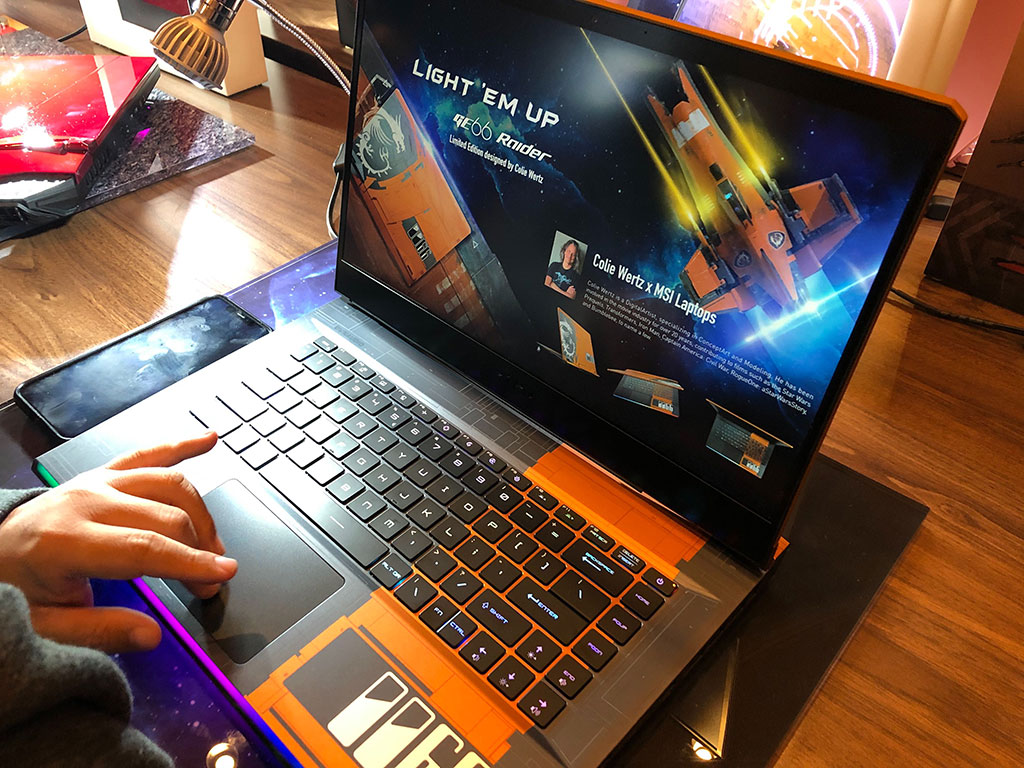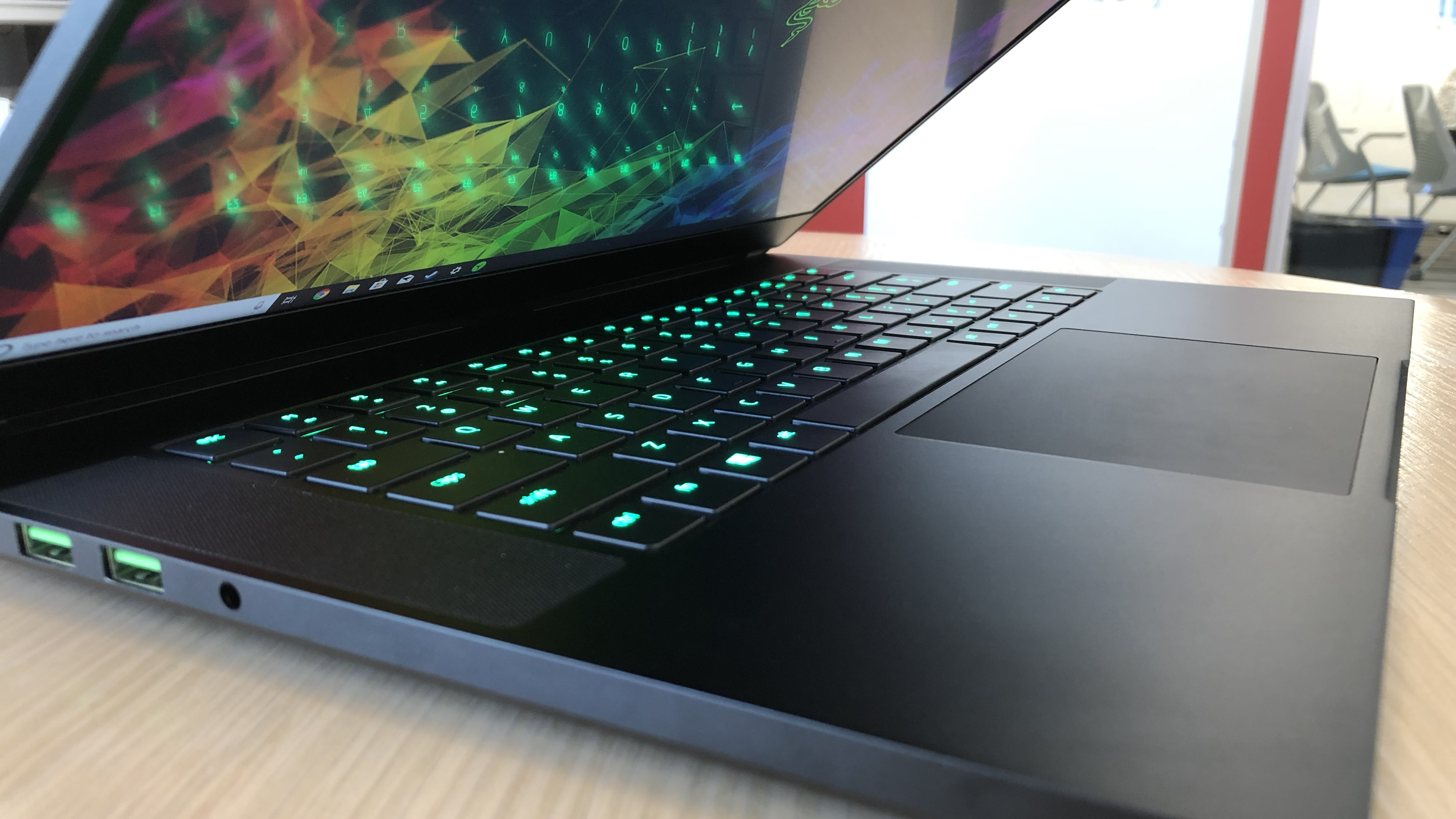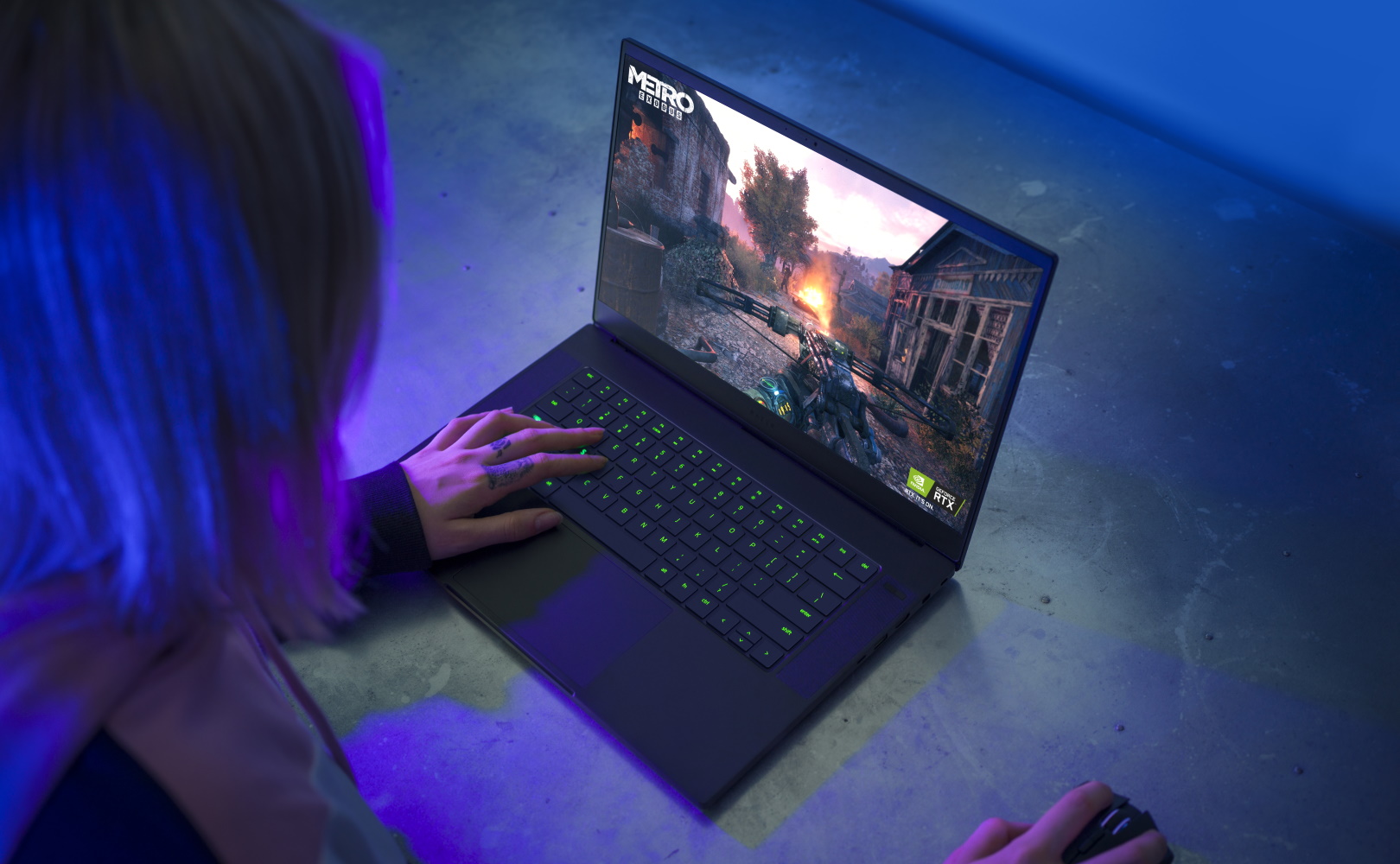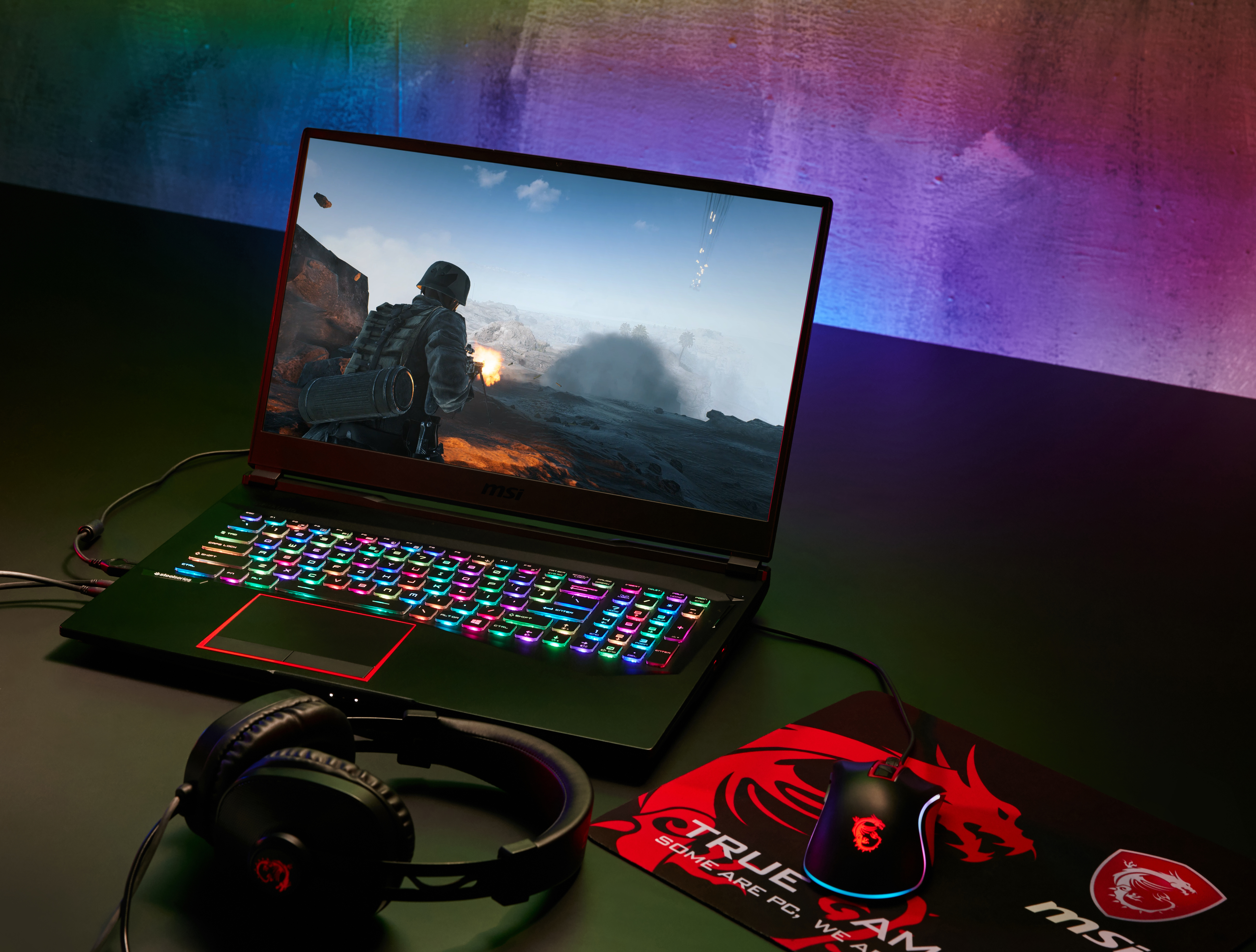What's the difference between GeForce Max-Q and Max-P laptops?
Know what these labels mean, and what they don't mean.

Shopping for a gaming laptop can be a pain in the ass. One make and model of laptop can have many configurations, and even official manufacturer websites sometimes provide confusing or incomplete specifications. One increasingly common distinction is what kind of mobile Nvidia graphics subsystem you're getting: regular or Max-Q. Retail listings don't always specify, but it's something you need to know before pulling the trigger on a new laptop, because it affects how the system is going to perform.
Here's what it means when a laptop's Nvidia graphics chip is designated as Max-Q, what it means when you see Max-P instead, and what to expect if there's no specification.
What is Max-Q?
Introduced in 2017, Max-Q is a term Nvidia uses to describe design methodologies and technologies that allow GeForce graphics chips to be stuffed into thin, light gaming laptops without melting them. When it comes to performance, laptops with GeForce Max-Q graphics are almost always less powerful than equivalent laptops without the Max-Q label. That’s because they literally use less power.
Each mobile Nvidia graphics subsystem is rated for a range of power configs: 80 to 115W for the mobile GeForce RTX 2070 Super, for example. A laptop which features an RTX 2070 Super that runs at 80 or 90W and meets certain thermal standards will get the Max-Q designation, whereas a full-power 115W mobile RTX 2070 Super will have no designation, or sometimes a "Max-P" designation.
Because it uses less power, the Max-Q version of a GeForce graphics system will have lower clock speeds. It's a trade-off. You won't get the best possible performance out of your mobile GPU with a Max-Q system, but you'll get good performance in a device that meets Nvidia's Max-Q size, thermal, and noise standards. The lightest, sleekest, best-looking Nvidia-powered gaming laptops tend to be Max-Q builds.
The Razer Blade 15 is a good example of a laptop that uses a Max-Q design. The latest high-end version with an RTX 2080 Super Max-Q can deliver good results: GamingTrend recorded a 57 fps average in Assassin’s Creed Odyssey at max settings with the laptop on 'balanced' power settings. That's a demanding game when maxed out, and with some tweaks you could expect to hit 90 fps at 1080p. And the Razer Blade 15 can do that while weighing under 5 lbs.
When you get a Max-Q laptop, you're buying a high-end machine that sacrifices a bit of graphics performance—generally 10-15% at most—for the sake of portability, style, reduced fan noise (Nvidia says the target is 40dBA or lower, which is pretty quiet), and increased battery life.
Keep up to date with the most important stories and the best deals, as picked by the PC Gamer team.
Bigger laptops that use full-powered mobile GPUs may be available at similar prices, and may offer better gaming performance while being louder and clunkier, because they need more cooling and space. Full-power mobile GPUs will often be found in 17" laptops, whereas 15" laptops are more likely to go the Max-Q route.
What is Max-P?
I use "full power" to describe non-Max-Q graphics, but keep in mind that I mean full power for a mobile GPU, which is not the same as a desktop GPU. A desktop RTX 2070 Super graphics card uses 215W, and will easily beat its 115W mobile variant, which in turn beats the 80-90W Max-Q setup. So there are three tiers: desktop, mobile (aka Max-P), and mobile Max-Q.
Max-P is not an official Nvidia term like Max-Q, but laptop manufacturers sometimes use it anyway. It stands for “max performance,” and was made up to identify non-Max-Q laptops. A laptop with a GeForce RTX 2070 Super mobile chip that uses the full 115W would be a “Max-P” laptop.
The term isn't used much because it's technically the same as not specifying anything, but it's starting to appear more to avoid ambiguity—and as a marketing tool to suggest that you're getting the highest possible level of performance, even though that isn't necessarily true.
To get the Max-Q label, laptop makers have to meet a set of standards, whereas no designation or the Max-P designation indicates a lack of standards. Typically, that's going to mean that you're getting a full-wattage, full speed mobile graphics system, but know that it doesn't have to mean that. You'll want to look for laptop reviews and benchmarks to see what the heat, sound, and performance situation is.
For the most part, though, you can assume that a Max-Q laptop will be quieter and thinner than a Max-P laptop at the expense of lower framerates. In some cases, the Max-Q graphics in a thin laptop can restrict temps so much that you can get better performance from Max-P GPUs that are a tier or more down. For example, an RTX 2080 Super Max-Q laptop isn't necessarily faster than an RTX 2070 Max-P laptop. But because there is no true "Max-P standard," and even Max-Q describes multiple possible power levels, it's going to vary between laptops.
What if it isn't specified?
In theory, an Nvidia mobile GPU with no special designation runs at the highest mobile power specification. In practice, it’s a good idea to look for reviews or a spec sheet on the manufacturer's website to verify what you're getting. If you're looking at a 15" laptop and the specs advertise a high-powered GPU (eg, a 2070 or 2080 Super) without the Max-Q designation, it's possible the label is just missing.
Take the slick 15.6" MSI GE66 Raider. The title of this configuration says it contains an "RTX2080 Super 8GB," but that's not the whole truth. Max-Q is designated further down in the product description—you've got to look carefully sometimes.
Note that different configurations of the same laptop model may be designated differently. One config might include a full power RTX 2070 Super, while another features an RTX 2080 Super Max-Q, because while the design can handle the 115W RTX 2070 Super mobile, it can't handle the 150-200W RTX 2080 Super mobile.
Are Max-Q gaming laptops worth it?
If you're buying a Max-Q laptop, you're probably buying a pricey, thin, 15.6" device with a top-of-the-line mobile GPU. Consider carefully whether that's really your best option, because alternatively, you could get an equally powerful desktop PC and a nice monitor, and you might have money left over.
For instance, instead of a $3,000 laptop with RTX 2080 Super Max-Q graphics (like the MSI GE66 Raider I brought up earlier), you could build a very good $1000-$1500 PC with a more powerful desktop RTX 2070 Super or better, buy a fantastic 1440p 144Hz IPS monitor, and then buy a cheaper laptop to use for work or school. Not only will you have a better gaming experience, you won't have to fret about carrying around a super-expensive item.

Another option: Pick up a more modest gaming laptop with something like a GTX 1660 Ti, which will perform great at 1080p and will run you $1,000-$1,500 instead of $2,300 or more. Then you can use the money you saved to buy a nice mouse, keyboard, and monitor for when you're using it at home. You won't get to turn RTX on, but even on my desktop RTX 2070 Super, ray tracing at 1440p is taxing, and an RTX laptop will struggle more. If you can live without the top-of-the-line tech, a mid-range gaming laptop will serve you well for now, and in a few years you can
Of course, if you want to splurge on a luxury, high-end laptop, it's not really about being practical, is it? It is pretty cool that, if you've got the money, you can hit 60-plus fps at 1080p in graphically demanding games with just a few compromises, a capability that was previously reserved only for laptops that look like alien briefcases.

Tyler grew up in Silicon Valley during the '80s and '90s, playing games like Zork and Arkanoid on early PCs. He was later captivated by Myst, SimCity, Civilization, Command & Conquer, all the shooters they call "boomer shooters" now, and PS1 classic Bushido Blade (that's right: he had Bleem!). Tyler joined PC Gamer in 2011, and today he's focused on the site's news coverage. His hobbies include amateur boxing and adding to his 1,200-plus hours in Rocket League.



